Carol Naylor is a contemporary textile artist who specialises in machine embroidery. Using a variety of threads she creates unique one off textiles by stitching directly onto painter’s canvas. Her work often describes grand landscapes and nature in stunning intimate detail.
Carol studied at Goldsmiths School of Art, lectured full time at Chichester University before becoming a full time textile artist. She has exhibited and worked widely in the UK and also in the USA, Europe, New Zealand. Other roles include fellow and former chairman of the Society of Design Craftsmen and former curator of the annual winter exhibition at the Mall Galleries, London, with commissions carried out for hospital Trusts. Carol’s work is in public and private collections.
In this interview, which is part of our From Conception to Creation series, Carol Naylor discusses the evolution of the piece ‘Sea of Lavender’. We learn about the artist’s love for this scented herb and the preparation and techniques employed to bring this beautiful canvas to life.
Name of piece: Sea of Lavender
Year of piece: 2015
Size of piece: 22cm x 24cm
Materials used: Rayon, metallic, cotton, woollen/acrylic threads and merino fibres, stitched onto cotton duck canvas.
Techniques/methods used: Machine embroidery, with cable stitch as the main component, then sewn onto a box canvas, and fixed into a bespoke unglazed white wooden frame.
Swathes of purple and lilac
TextileArtist.org: How did the idea for the piece come about? What was your inspiration?
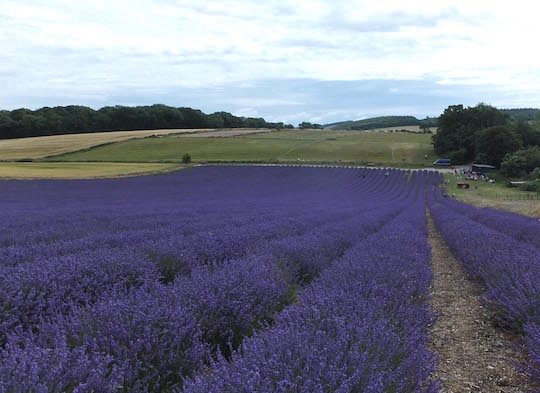
Carol Naylor: Over the years, I have seen lavender growing in France and Spain. I have glimpsed swathes of purple and lilac across fields and under mountains, and walked along dusty roadsides to make notes, quick drawings, or taken photos to remind me of shapes and colours.
In 2007, I began to make a series of Spanish lavender pieces that explored the richness of the contrasting colours of lavender, terra cotta earth, wheat-fields and the sierra. However, in 2014 I visited Lordington Lavender a few miles from my home in the South Downs for the first time. The experience was extraordinary. The subtle, yet overwhelming scent, the sound of the bees, the colours, the light, made an impression that lingered for hours afterwards and was a complete contrast in every respect to my Spanish experience.
Thinking and preparation
What research did you do before you started to make?
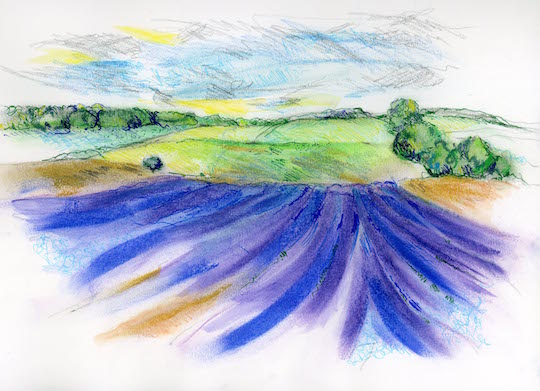
Drawing is an essential part of my thinking and preparation. Before I can begin to think about making a textile piece, I make a series of drawings in my sketchbook. I rarely draw with the end in mind. I draw, turn the page, do another drawing, turn the page, draw, I make notes, and so on. Sometimes it is the first drawing I make that becomes the starting point, but I cannot know that until I have worked through several ideas. A very quick sketch or a memory drawing can be enough. If I take a photograph I see it as an aide-memoire. On other occasions, I work through the ideas, selecting different aspects of the drawings until I feel ready to turn to my sewing machine. When I saw the lavender fields, I followed this process in my sketchbook. After recording several ideas, I decided to use my first drawing from the lavender farm (drawing 1).
Was there any other preparatory work?
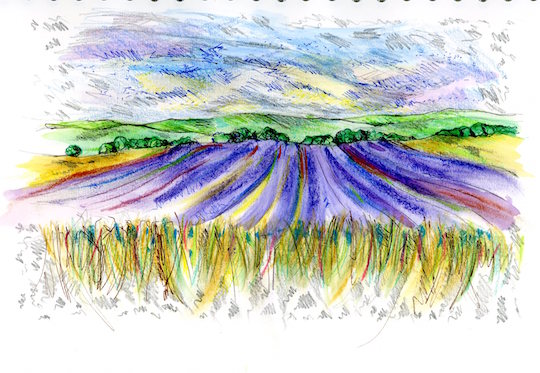
Even before starting ‘Sea of Lavender’, I felt sure that I would be making a series of pieces and this proved to be the case. In drawing 2, I emphasized the bands of lavender sweeping towards me. This influenced the way I approached ‘Sea of Lavender’ and eventually led to another embroidery.
Simple, yet intensive
What materials were used in the creation of the piece? How did you select them? Where did you source them?
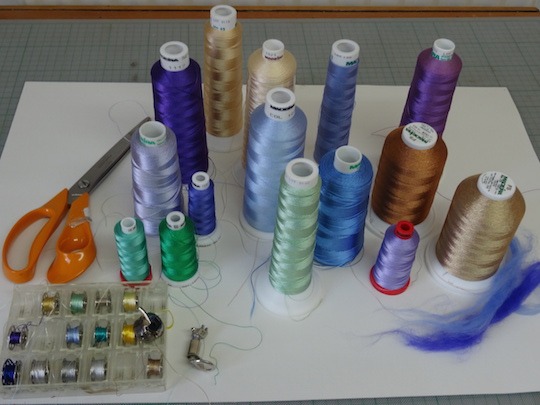
I used 9.5oz weight cotton duck canvas as the base, from Whaley’s of Bradford. My threads are usually Madeira threads from Barnyarns, although sometimes I buy the Natesh heavy Empress Rayon floss from Silken Strands. I love the classic rayon range made by Madeira, and use 30, 40 and 12 weight threads as well as Tanne 30, a cotton thread now called Cotona. I also like their Burmilana range, which is a woollen-acrylic mix. In addition, I add metal threads from the FS range, weights, 30, 15 and 12. In Sea of Lavender, I finally added some small fragments of merino wool fibres over the intensive stitching.
What equipment did you use in the creation of the piece and how was it used?
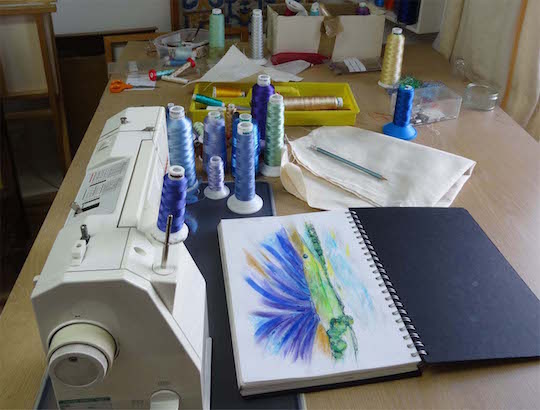
My tools are simple. I use a Bernina 1008 with a large presser foot attachment that allows me to see my stitching very clearly. I never use a hoop or stabilizer, as I love the undulations caused by the weight of the threads. I build the lines continually, changing from rayon to metallic, or adding matt cotton or woollen mixes that contrast with the richness of the shiny richer threads. This is a mechanical machine, not a computerized one; this is actually very important for me, as I need to have total control over the machine’s top and bottom tensions.
The physical act of stitching
Take us through the creation of the piece, stage by stage.
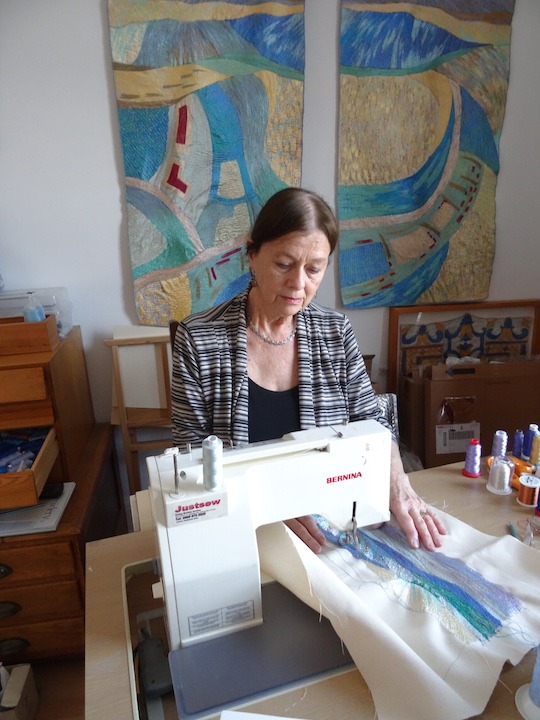
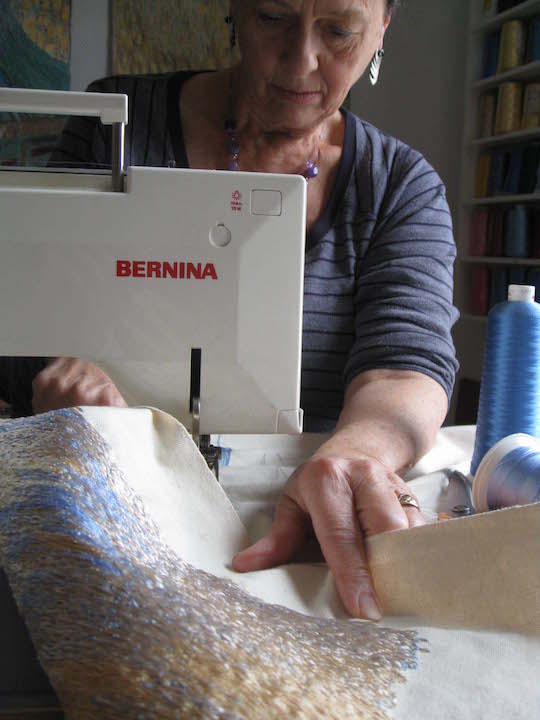
Readers who are familiar with my work know that I stitch mainly from the reverse of the fabric, with heavyweight threads in the bobbin and a normal 30-weight thread on top, a technique known as cable stitch. This means I am looking at the back, as the top thread couches the bobbin threads underneath, to what is the right side of the fabric. So yes, I cannot actually see what I am doing for about 80% of the time. I do this because I can manipulate the fabric freely and create long, couched lines rather than fine stitched lines. Details, refining, correcting, redrawing, all these elements are gradually added on the correct side, using number 30 and 40 weight threads.
I began by stitching the horizon and immediate fields, and gradually worked forward, changing and adapting ideas as I worked. I worked finally on the sky. Once I have begun a piece, and am happy with the initial drawing with the machine and my starting palette, I put the drawing away. The physical act of stitching changes the base fabric, undulations make me change direction, and I allow my materials to dictate certain aspects of the work to me. If I am dissatisfied with my stitching and drawing, I change it.
What journey has the piece been on since its creation?
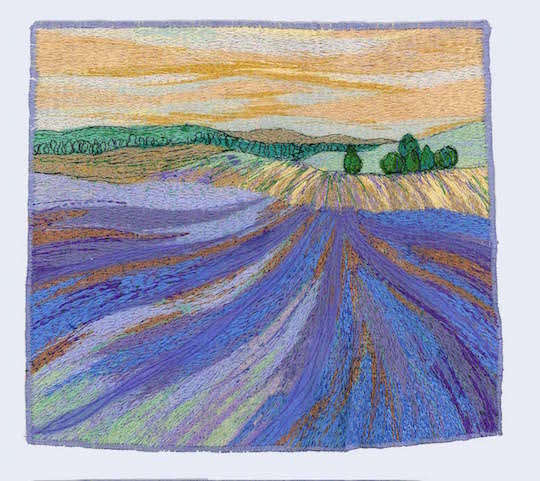
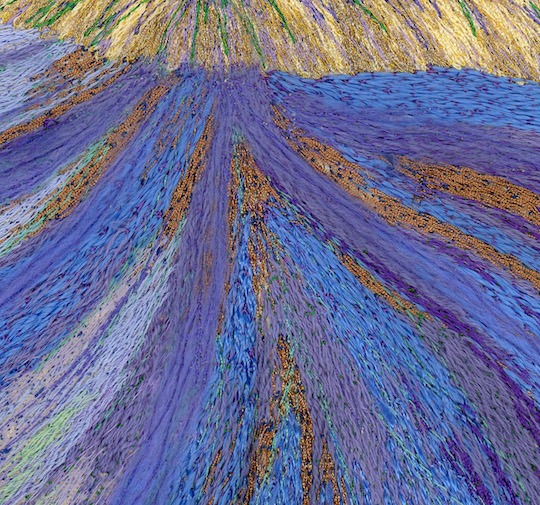
I completed ‘Sea of Lavender’ just in time to show it at Designer Crafts at the Mall, 2015 in London, the annual winter exhibition of the Society of Designer Craftsmen.
As I was also going to demonstrate at Art in Action, held at Waterperry in July, I sent it to the offices as one of the images to represent my recent body of work. It featured in the NADFAS summer review magazine, as well as in the Art in Action catalogue.
It never got to Waterperry though, as it sold on the first day of Chichester Art Trail in May, and is now in a private collection.
Sometimes when I make a piece, large or small, I feel instinctively that it has worked in terms of expressing what I wanted to say. This is not a large machine embroidery, yet it gave birth to a series of pieces, and I am thinking now of where to go next. Larger, more abstract perhaps, sweeping bands of colour that change and blend with each other, so perhaps a hanging will be the result. Only time will tell, because whenever I make an embroidery, it becomes a summary of my experiences.
For more information please visit: www.carolnaylor.co.uk & www.carolnaylortextiles.com
Got something to say about the techniques, materials and processes used by this artist? Let us know by leaving a comment below.
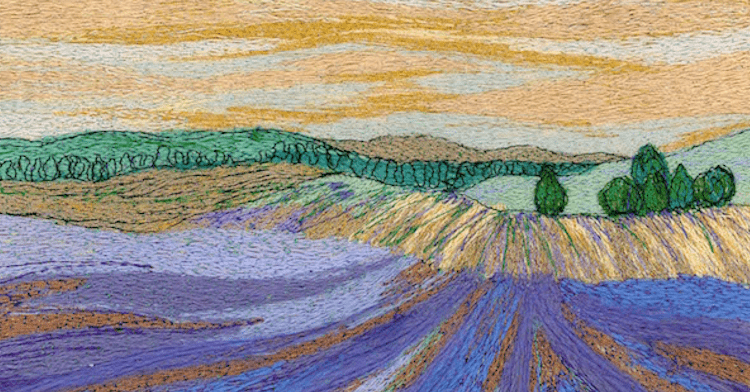

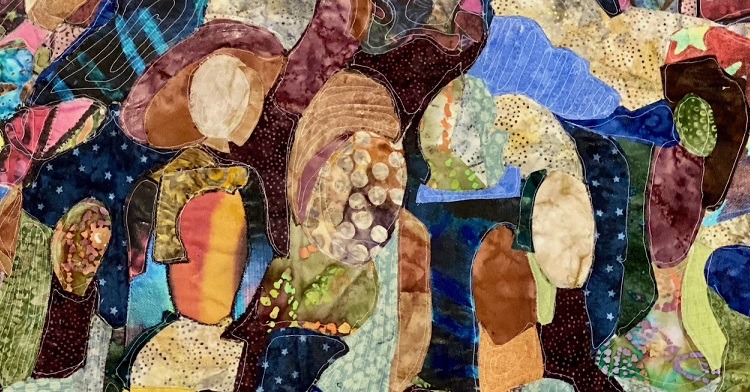
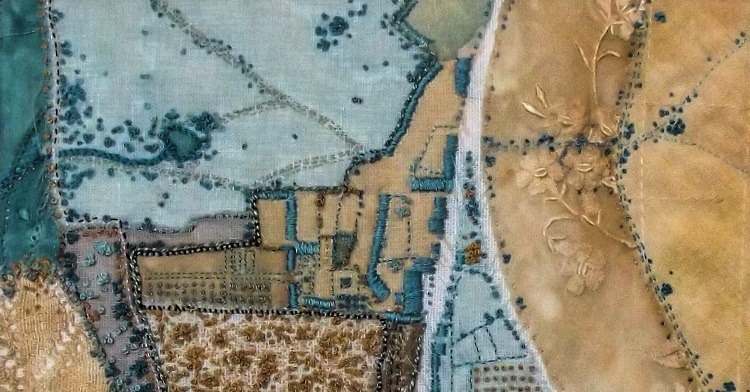

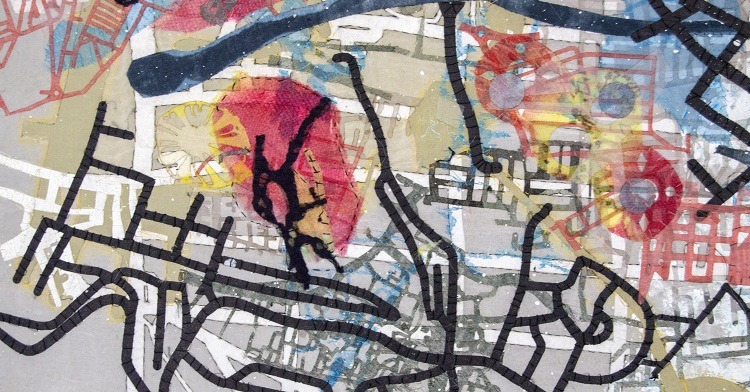
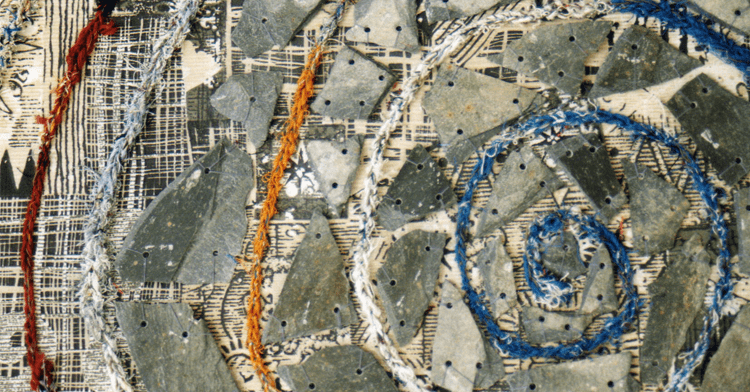
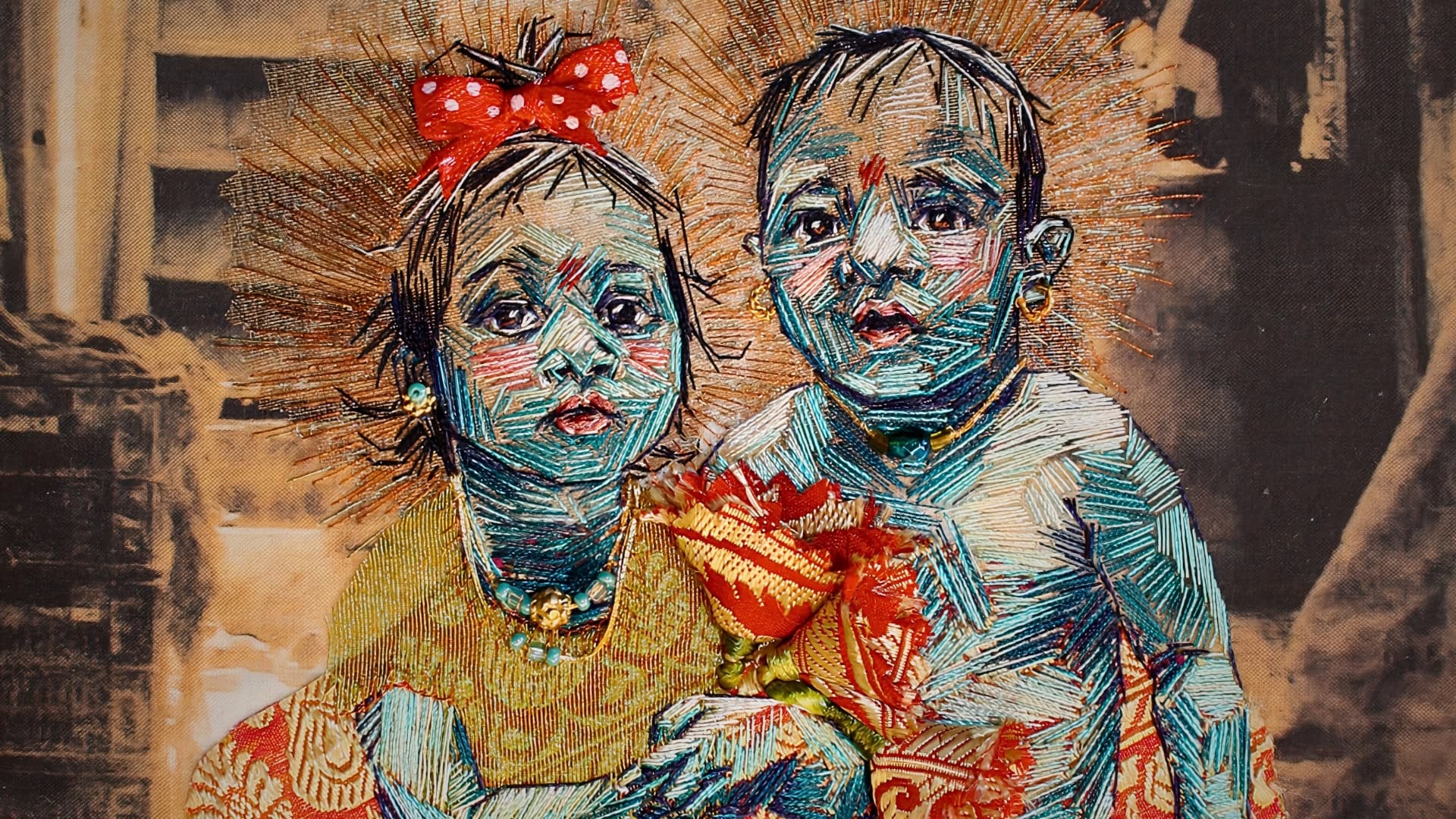
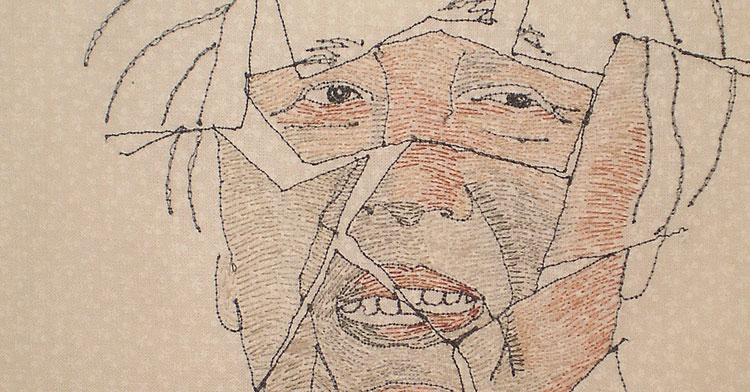
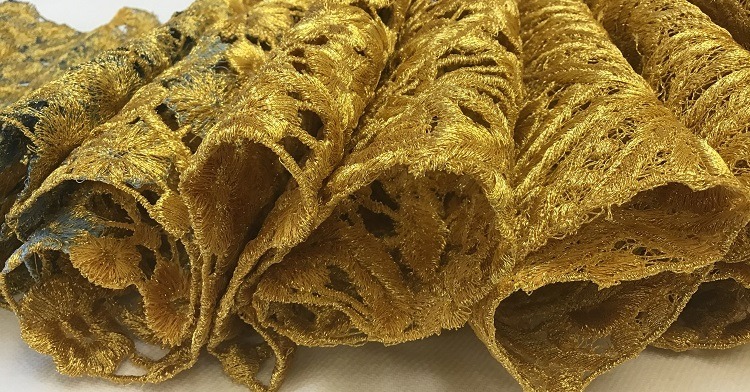
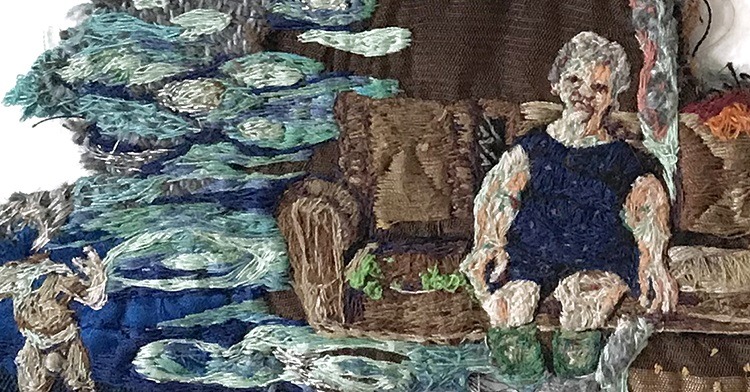
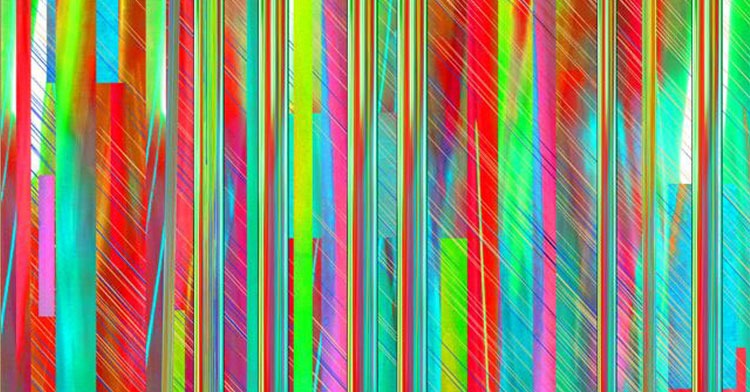
7 comments
Sandy Corry
I love this piece. The surface texture is so beautiful. Thank you for your generosity in explaining your process and journey. Looking forward to seeing more of your work
Carol Naylor
Sandy Cory thank you very much for your lovely comment.This is a piece that seemed to just flow when I made it
Judith Balchin
I belong to an Embroidery Guild and a Quilting Club. Both are ‘hung up’ with pieces like this lying flat. How do you mount/exhibit your pieces for gallery or exhibitions?
Carol Naylor
Judith Balchin, I’ve only just read your comment. I stitch pieces like this to a box canvas by hand of course, and then have a box frame made for it, no glazing. Hangings are from batons and small pieces mounted and glazed.
Chloe
So fascinating to read more about your wonderful work Carol 🙂
Carol Naylor
Dear Alison, what a lovely comment thank you. You have made my day. If you are ever in Chichester you are welcome to call round, but contact me first of course! I think all textile work needs to be seen if possible as light plays such a big role in our work.
Alison Parks
Thank you for this fascinating interview with Carol. I lived near Chichester until last year and have met Carol on a number of occasions at the Art Trail. Her work is beautiful, even more so when seen ‘live’ as you can really appreciate the texture as well as the subtlety of the colours of the threads. I use a mechanical Bernina and Madeira threads as well – I just wish I had a fraction of Carol’s talent!